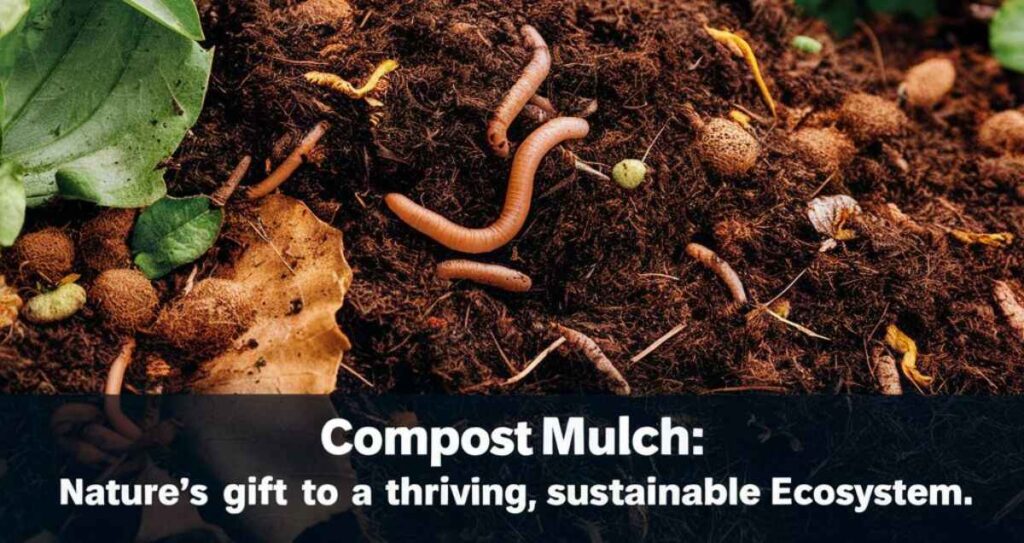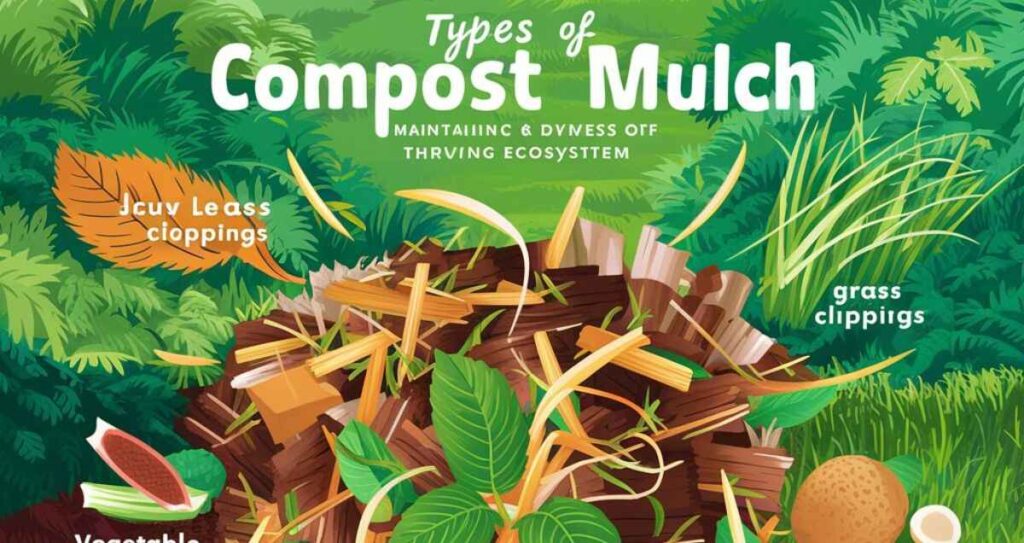Compost mulch is a layer of decomposed organic material applied to the soil surface in gardens and landscapes. It not only enriches the soil with nutrients but also helps suppress weeds, retain moisture, and regulate soil temperature.
Imagine stepping into a garden that thrives with vibrant plants and minimal weeds—all thanks to a rich layer of compost mulch. This eco-friendly option transforms your landscape while nurturing the soil and promoting sustainability!
Compost mulch serves multiple functions beyond aesthetic appeal. It enriches the soil as it breaks down, feeding your plants essential nutrients while improving soil structure. Additionally, its moisture-retaining properties can significantly reduce watering needs during dry spells.
What is Compost Mulch?

Compost mulch consists of decomposed organic matter used as a protective layer on the soil surface. This rich material can include kitchen scraps, yard waste, and other organic materials that break down into nutrient-dense compost. By applying compost as mulch, you can enrich your soil while providing a protective barrier against weeds and temperature fluctuations.
Benefits of Compost Mulch
Soil Enrichment
- Compost adds essential nutrients back into the soil as it breaks down, promoting healthier plant growth. This is particularly beneficial for vegetable gardens and flower beds.
Weed Suppression
- A thick layer of compost mulch helps block sunlight, effectively minimizing weed growth and reducing the need for chemical herbicides.
Moisture Retention
- Compost muck helps retain soil moisture, reducing the frequency of watering. This is especially important during hot, dry seasons.
Temperature Regulation
- By insulating the soil, compost muck keeps plant roots cooler in summer and warmer in winter, promoting a stable environment for growth.
Environmentally Friendly
- Using compost muckh recycles organic waste and reduces landfill contributions. It’s a sustainable option that benefits both your garden and the planet.
Types of Compost Mulch

When selecting compost for mulching, consider these types:
- Home-Made Compost
- Created from kitchen scraps and yard waste, this is often the most nutrient-rich option.
- Commercial Compost
- Available at garden centers, this compost is often screened and processed for consistency and quality.
- Worm Castings
- Produced by composting worms, this nutrient-dense material enhances soil health and provides a rich source of organic matter.
| Type | Source | Best Uses |
|---|---|---|
| Home-Made Compost | Kitchen scraps, yard waste | Vegetable gardens, flower beds |
| Commercial Compost | Processed organic materials | General landscaping, garden beds |
| Worm Castings | Worm composting | High-nutrient plants, potted plants |
How to Apply Compost Mulch
Applying compost mulch is straightforward, but proper techniques can maximize its benefits. Here’s how to do it effectively:
Prepare the Area
- Clear the Site: Remove any weeds, grass, or debris from the area where you plan to apply compost mulch.
- Level the Ground: Rake the soil to create an even surface. This will help with drainage and ensure the compost settles evenly.
Apply the Compost
- Layer Thickness: Aim for a thickness of 2 to 4 inches. This depth is sufficient for weed suppression and moisture retention without suffocating your plants.
- Spread Evenly: Use a shovel or rake to distribute the compost evenly across the area. Avoid piling it against plant stems to prevent rot.
Maintain the Mulch
- Regular Checks: Monitor the compost layer, especially after heavy rains. Add more compost as needed to maintain the desired thickness.
- Aeration: Occasionally stir the compost to promote aeration and encourage microbial activity.
Case Study: Transforming a Vegetable Garden with Compost Mulch
A local gardener in Austin, Texas, decided to revitalize her vegetable garden using compost mulch. Here’s a closer look at her journey:
The Challenge
The garden had poor soil quality and struggled with weed overgrowth. The gardener sought a solution that would improve soil health while keeping maintenance manageable.
The Solution
- Compost Creation: She began by creating her own compost using kitchen scraps, grass clippings, and leaves. After several months of decomposition, she had nutrient-rich compost ready for use.
- Mulching: She applied a 3-inch layer of compost around her vegetable plants, ensuring it wasn’t piled against the stems.
- Watering Strategy: With the compost in place, she noticed a significant reduction in watering frequency, thanks to improved moisture retention.
The Results
The garden flourished! Plants showed remarkable growth, and the weed problem diminished significantly. The gardener enjoyed a bountiful harvest while contributing to a more sustainable gardening practice.
Tips for Choosing and Using Compost Mulch
- Select Quality Compost: Ensure the compost is well-decomposed and free of weed seeds. Look for a dark, crumbly texture.
- Balance Nutrients: Incorporate a variety of organic materials in your compost to provide a balanced nutrient profile.
- Layer with Other Mulches: Consider mixing compost with other types of muck, like straw or wood chips, for added benefits and aesthetic variety.
Conclusion
Compost mulch is a fantastic way to enrich your garden while minimizing maintenance. With its numerous benefits—from soil enrichment to weed suppression—it’s a sustainable choice that promotes healthy plant growth. By choosing compost muck, you’re not just improving your garden; you’re also making a positive impact on the environment.
So why not give compost muck a try? Your plants—and the planet—will thank you.
David Mark is a seasoned home improvement expert and the creative mind behind DesignersParadise. With a keen eye for design and a passion for transforming spaces, David offers practical advice and innovative solutions for creating beautiful, functional homes. His insightful articles and tips aim to inspire and guide readers in enhancing their living environments, making every home a true reflection of style and comfort.
